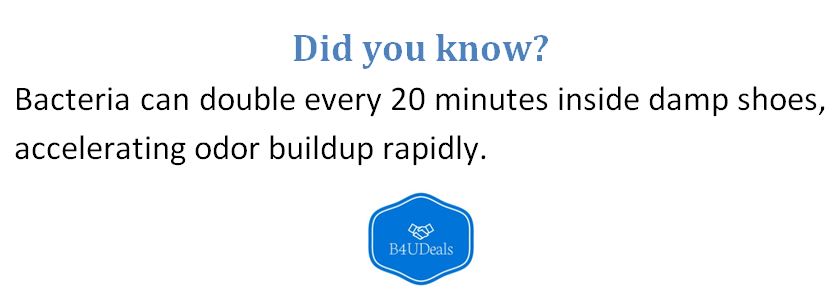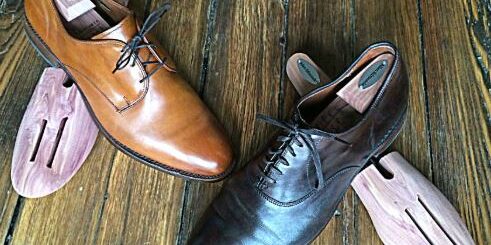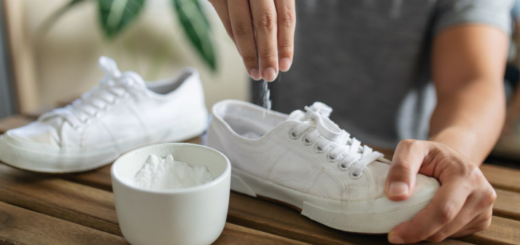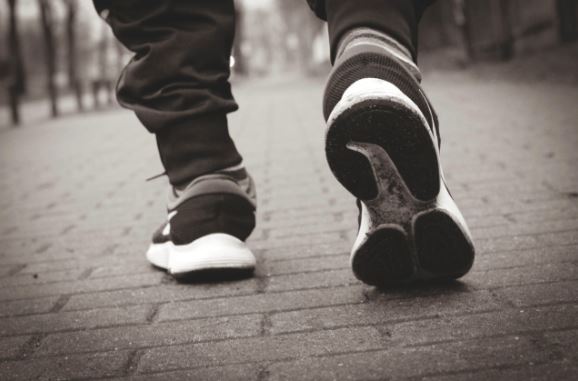How to Eliminate Shoe Odor Like a Pro: Tips from a Footwear Expert
As someone who has spent years working with all types of footwear—from high-performance running shoes to premium leather loafers—I’ve come across countless clients plagued by one of the most persistent issues in shoe care: odor. The truth is, stinky shoes are not only embarrassing but also unhygienic. The good news? You don’t have to toss your favorite kicks just because they smell off. With the right techniques, you can restore freshness and prolong your footwear’s lifespan.
Let’s explore proven, practical ways to banish shoe odor using both home remedies and professional insights.

Why Shoes Start to Smell
Odor in shoes is almost always a byproduct of trapped moisture, body oils, and bacteria. When your feet sweat—especially during exercise or long days in warm weather—this moisture gets absorbed into the fabric, insole, and lining of your shoes. Over time, it creates the perfect breeding ground for odor-causing bacteria and fungi.
To fix the problem, you need a two-pronged approach: eliminate moisture and kill bacteria.
Step One: Let Air and Sunlight Work Their Magic
The simplest yet most overlooked remedy is ventilation. Remove the insoles and loosen the laces to allow air to circulate inside the shoe. Then, place your shoes outside in a dry, sunny location. Sunlight naturally kills bacteria, and fresh air helps evaporate trapped moisture.
If outdoor conditions aren’t ideal, position your shoes near a fan, heater, or dehumidifier indoors. Avoid sealed spaces like closets or gym bags unless the shoes are thoroughly dry.
Step Two: Use Absorbent Materials to Draw Out Moisture
Even if your shoes look dry, they may still hold moisture in hidden areas. Here’s how to fix that:
Newspaper Method: Crumple up sheets of newspaper and stuff them deep into each shoe. Newspapers wick moisture away effectively and can even capture some of the odor molecules. For a touch of freshness, add a few drops of essential oil—like lavender, tea tree, or eucalyptus—to the paper.
Tissue or Paper Towels: These work in a pinch if newspaper isn’t available. Replace them every few hours for best results.

Step Three: Neutralize Odors with Pantry Staples
As a footwear professional, I always encourage low-cost, accessible solutions before recommending commercial products.
Baking Soda: This is one of the most reliable deodorizing agents. Sprinkle a generous layer of baking soda into each shoe, shake to spread it around, and let it sit overnight. The powder will absorb moisture and neutralize odors. Before wearing the shoes again, dump out the powder and vacuum any remaining residue.
Cornstarch: It’s not just for thickening sauces—it works similarly to baking soda but is gentler on delicate materials.
Table Salt: A less common method, but salt draws out moisture and can help deodorize shoes, especially those made of canvas or mesh. It’s less effective on leather or suede, where it may stain or damage the finish.
Step Four: Employ Natural Scent Boosters
Once the shoe is dry and moisture-free, you can introduce pleasant aromas.
Dryer Sheets: These are great for masking minor odors and maintaining freshness in stored shoes. Tuck one sheet inside each shoe and let it sit overnight. This doesn’t solve the root cause of odor but can buy you time between deep cleanings.
Activated Charcoal Pouches: These are available commercially, often used in closets and gym bags. They absorb smells and moisture without leaving a scent behind.
Cedar Shoe Inserts: As a traditional choice for dress shoes, cedar helps fight bacteria and fungus while imparting a fresh, woody aroma.
Step Five: Disinfect Where It Counts
If odor persists, it’s likely due to lingering bacteria in the footbed or lining.
Rubbing Alcohol: Apply a small amount to cotton balls or pads and wipe down the inside of the shoe. Not only does this kill bacteria, but it also speeds up drying. Be cautious with leather—test a small area first.
Vinegar Solution: Mix equal parts white vinegar and water. Soak removable insoles in the mixture for several hours, then rinse and air dry completely. Vinegar neutralizes odors and kills bacteria, though it leaves a scent that dissipates with time.
Step Six: Wash with Caution
Washing Insoles: If your insoles are removable, washing them separately is ideal. Use a gentle detergent and lukewarm water. Either hand wash them or put them in a laundry bag on a gentle cycle in the washing machine. Let them air dry fully before reinserting.
Machine Washing Shoes: For athletic shoes made from canvas or mesh, a washing machine can be a safe and effective option. Always remove the insoles and laces, and place the shoes in a pillowcase or laundry bag to protect them during the wash. Use cold water and a mild detergent, then air dry for 24–48 hours.
Avoid Machine Dryers: Dryers can warp the structure of most shoes—especially those with foam midsoles or leather uppers. The intense heat can also damage adhesives.
Step Seven: Consider Antifungal and Medicated Solutions
Antifungal Sprays or Powders: If your feet or shoes are prone to recurring odor, try an over-the-counter antifungal product. These are particularly helpful if you’re dealing with athlete’s foot or similar conditions.
Medicated Insoles: You can upgrade your shoe’s insole with versions designed to kill bacteria and control odor. Some options are infused with charcoal, cedarwood, or antimicrobial agents. These are especially effective for shoes you wear frequently, like work boots or sneakers.
Preventing Future Odor Buildup
Now that you’ve restored your shoes, here are a few expert habits to help keep them smelling clean:
- Rotate your shoes: Don’t wear the same pair every day. Give each pair at least 24 hours to dry between wears.
- Use moisture-wicking socks: Choose breathable fabrics like merino wool or synthetic blends designed to reduce sweat buildup.
- Wash socks regularly: It sounds obvious, but clean socks make a huge difference in shoe hygiene.
- Use foot powder or deodorant: Apply before wearing shoes to minimize sweat and bacteria on your skin.
- Let shoes breathe: When not in use, store them in open air rather than zipped bags or sealed boxes.
- Replace insoles periodically: Even with good care, insoles degrade over time. Swap them out every few months to maintain comfort and hygiene.
When to Replace Your Shoes
If your shoes continue to smell after repeated cleaning or if the odor returns almost immediately after wear, it might be time to consider retiring them. This is especially true if:
- The footbed is permanently saturated or stained.
- The materials have broken down or can no longer dry properly.
- The insole is integrated and can’t be removed or cleaned.
Final Thoughts from a Shoe Specialist
Footwear is one of the most used and abused items in our daily lives, and with that comes inevitable wear—including odor. But just as you’d maintain a car or clean your favorite jacket, your shoes deserve attention too. Regular cleaning, drying, and thoughtful rotation can keep them fresh and extend their usefulness.
Whether you’re dealing with everyday sneakers or high-end leather footwear, remember that odor is not a life sentence—it’s a signal. With the right combination of moisture control, odor neutralization, and antibacterial treatment, even the stinkiest pair can smell clean again.
Treat your shoes with the care they deserve, and they’ll reward you with comfort, performance, and confidence in every step.
FAQs about Shoe Odor
What causes shoes to develop a bad odor?
Shoe odor is primarily caused by sweat and moisture that foster bacterial and fungal growth inside the shoes.
How can I quickly eliminate odor from my shoes at home?
Air them out in sunlight and use absorbent materials like baking soda or newspaper overnight to neutralize smells.
Is it safe to wash shoes in the washing machine?
Yes, but only for canvas or mesh shoes. Always remove insoles and laces, and use a gentle cycle with cold water.
Can rubbing alcohol help with smelly shoes?
Yes, it disinfects and kills odor-causing bacteria. Apply with cotton pads and allow to dry completely in a ventilated area.

What are the best natural deodorizers for shoes?
Baking soda, vinegar, salt, essential oils, and cedar inserts are all effective and natural ways to combat odor.
Are dryer sheets effective for masking shoe odor?
Dryer sheets help temporarily mask odors but don’t eliminate bacteria or moisture—the main sources of smell.
How do I prevent future shoe odor?
Rotate shoes, wear moisture-wicking socks, apply foot powder, and store shoes in well-ventilated areas.
When should I replace smelly shoes?
If odor persists after deep cleaning or the materials can no longer dry fully, it’s time to replace them.







